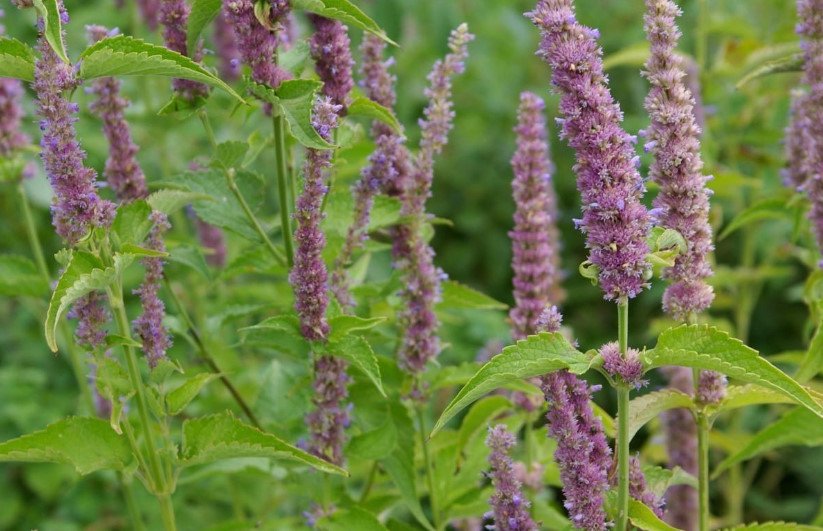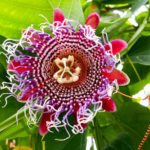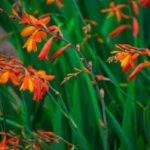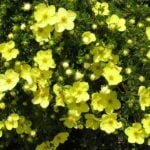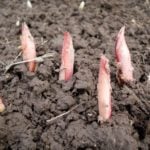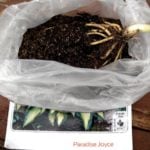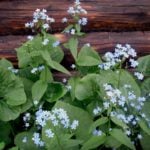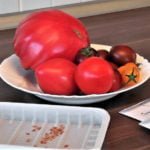Continuing to consolidate the theoretical material on the basic principles of plant composition), today we will conduct a virtual practice.
Consider the examples of the preparation of contrast compositions with coloscopie plants. Immediately I want to draw your attention that the range will be species, varieties with the classical form of inflorescences:
- ear;
- complex ear;
- spike brush and others.
At the same time cereals with spike inflorescences will not be considered, we will talk about them separately.
Spike inflorescence is vertical, to balance that horizontal — baskets, corymbose, umbellate, capitate.
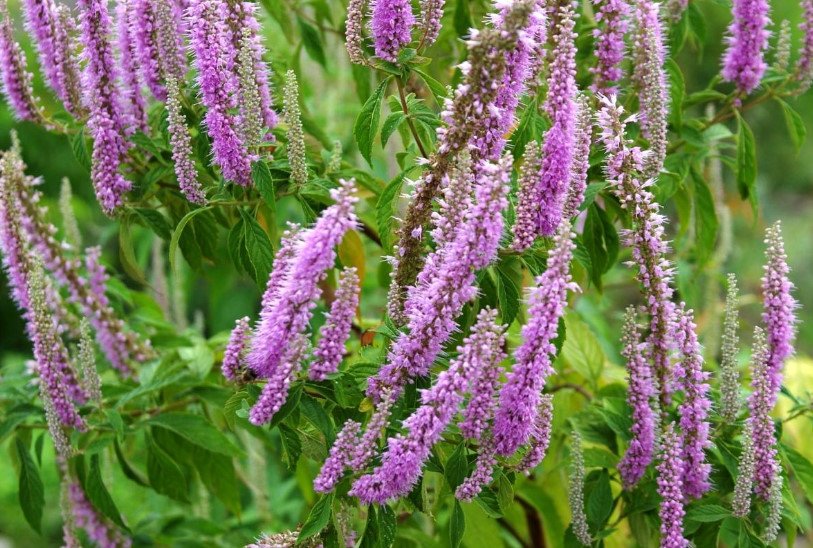
For the possibility of establishing a contrast of forms of inflorescences spicate plants appreciate landscape designers.
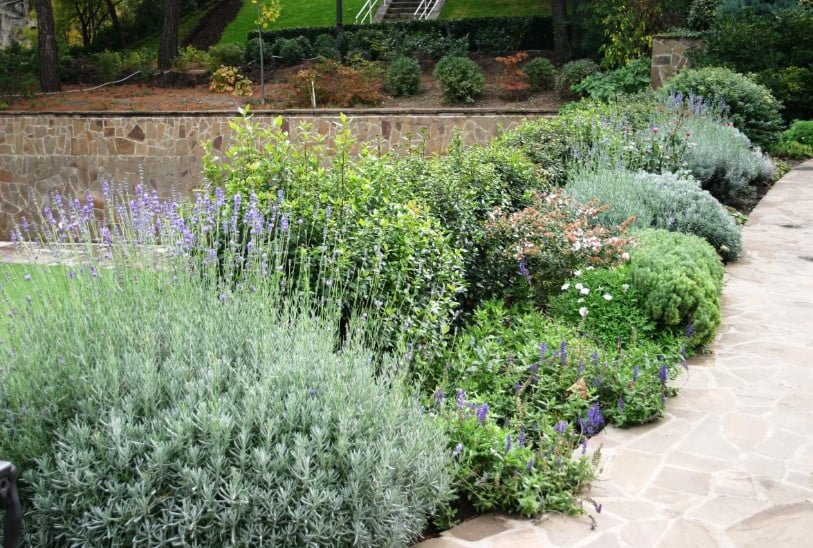
Mainly it is representatives of families:
- Lamiaceae;
- Fabaceae;
- Scrophulariaceae;
- Iridaceae and others.
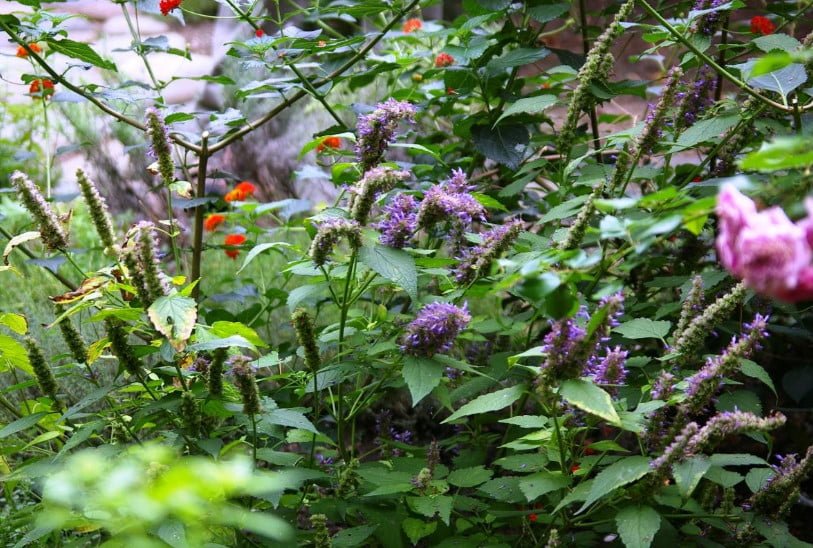
An additional (and sometimes the main) can be the contrast painting, which makes plant composition much more interesting.
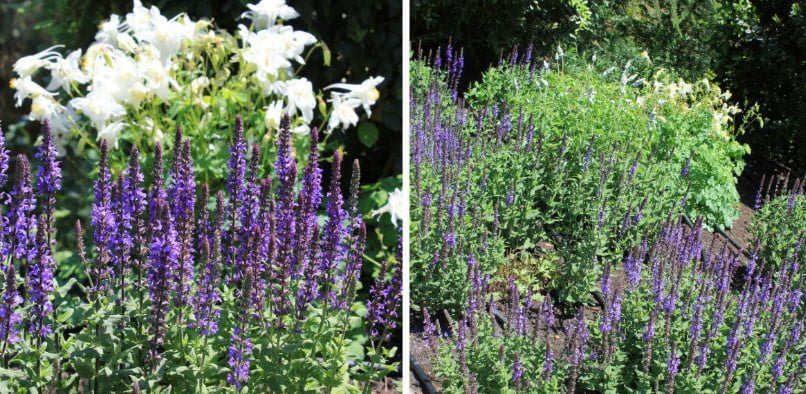
However, use the technique of contrast should be careful not to destroy the overall harmony of the flower bed.
So, if you are ready, go directly to the acquaintance with the spikelet plants and examples of compositions with their participation.
Veronica spicata
Beautiful rhizome perennial of the family Scrophulariaceae.
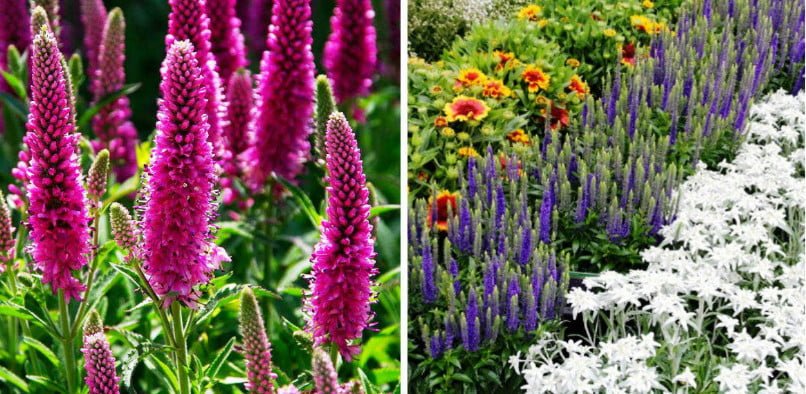
Veronica spicata has a lot of varieties. An interesting contrast in the compositions will be:
- var. nana — height 10 cm, bloom for a long;
- var. alba — height 40 cm, white flowers;
- var. rosea-light purple-pink or purple-purple flowers;
- ‘Icicle’ – height 60 cm, white flowers;
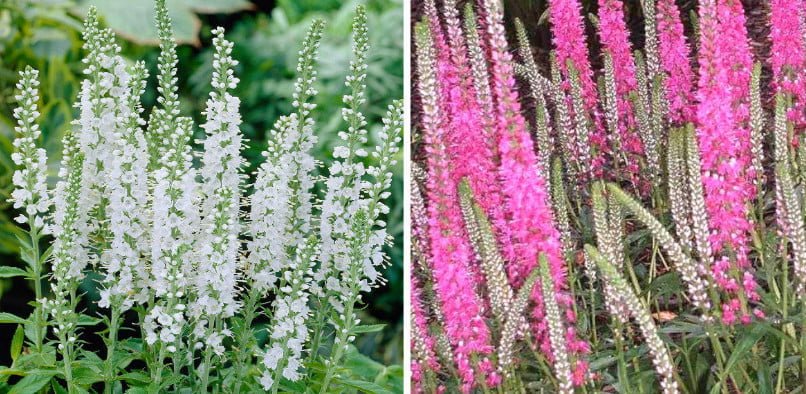
- ‘Romiley Purple’ — height 45 cm, flowers dark purple;
- ‘Rotfuchs’ — height of 30 cm, the flowers are intense pink;
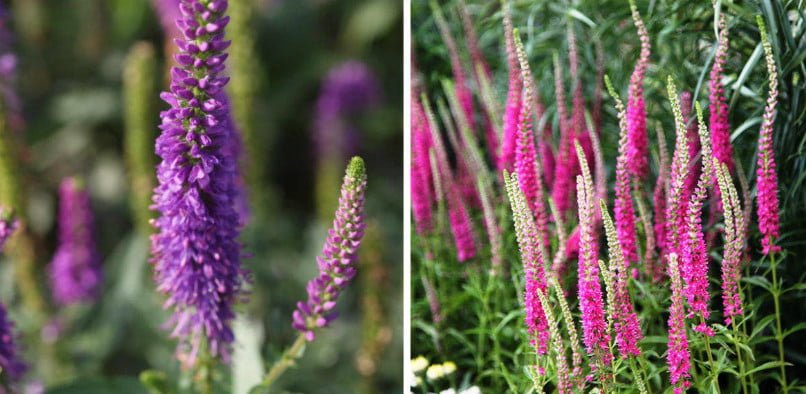
- ‘Giles Van Hees’ — flowers light pink;
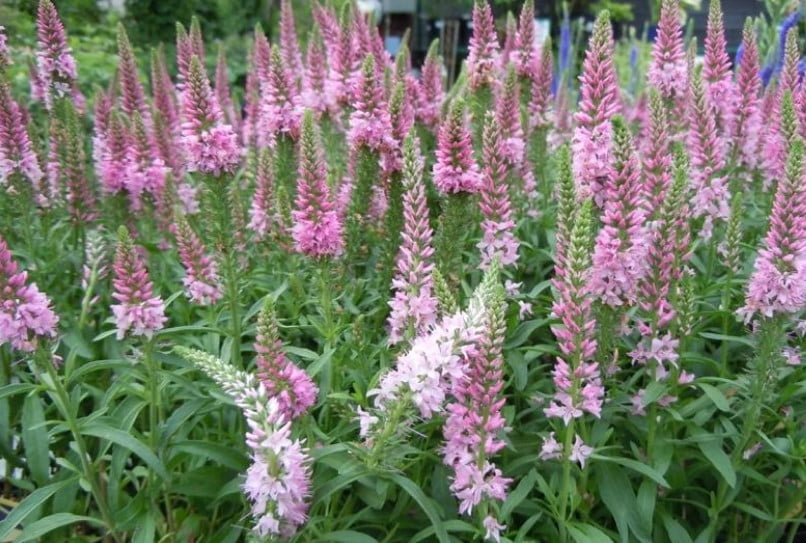
- ‘Christa’ -dark purple inflorescences with green comb top;
- ‘Red Fox’ – inflorescences pink, similar to the flowers of celosia;

- ‘Barcarolle’ — height of 30 cm, the inflorescence loose, the flowers are pink.
Participation in contrasting compositions
Veronica’s spikelets perfectly match with Gaillardia and Leontopodium alpinum baskets: purple looks advantageous against the orange background, and silver softens the contrast, makes the composition more interesting.
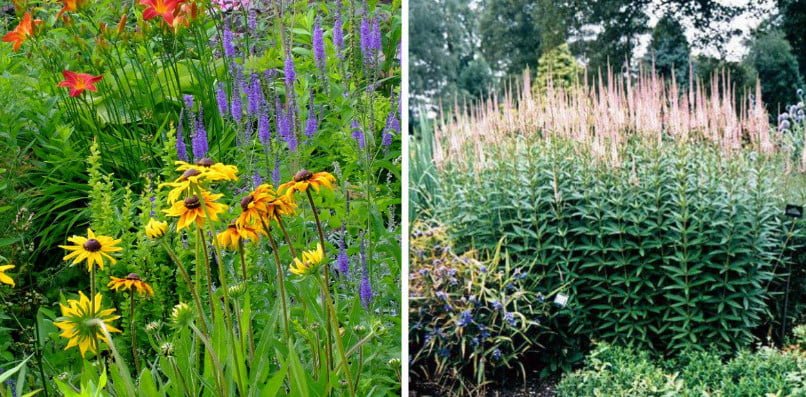
Important! The sowing surface. For germination need light, temperature + 16…+21 °C. Shoots appear within 1-2 months.
Veronicastrum virginicum, syn. Veronica vitginica
Recently, Veronicastrum virginicum was singled out in a separate genus.

Veronicastrum virginicum, syn. Veronica vitginica — erect perennial of North America. It is up to 2 m high, 45 cm wide; usually not pubescent, with unbranched shoots, leaves are serrated, lanceolate or obovate, 15 cm long, collected 3-7 in whorls. The flowers are white, pink, bluish-purple; bloom from mid-summer to early autumn.
Decorative varieties:
- ‘Album’ – height 1.75 cm, white flowers;
- ‘Rosea’ – 1.6 m high, pink flowers;
- ‘Fascination’ – up to 1.5 m, the flowers are light purple-blue;
- ‘Pink Glow’ -white-pink flowers;

- ‘Lavendelturm’ -1.5-2.5 m high, lavender flowers;
- ‘Diane’ – white flowers.
Participation in contrasting compositions
Spikelets veronicastrum luxury in a composition with intermittent whorled inflorescences of Monarda, Helenium baskets and Leucanthemum.
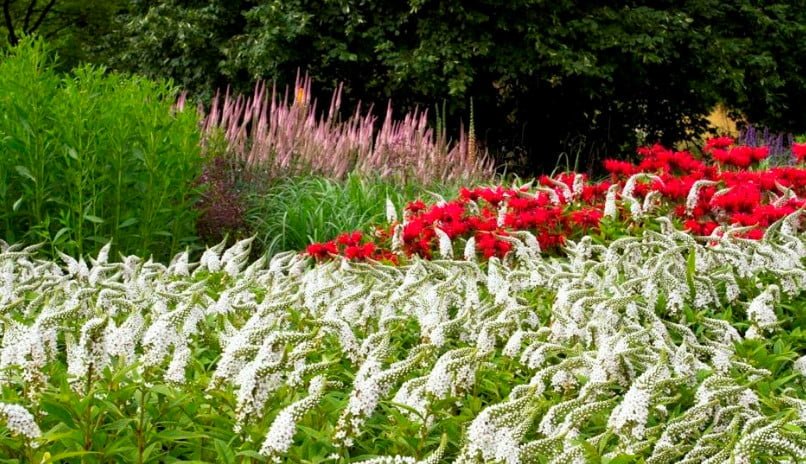
It is spectacular in the background in mixborders, it is an excellent accent plant for cottage and naturalistic gardens.
Important! The sowing surface. For germination need light, temperature + 16…+21 °C. Shoots appear within 1-2 months. In a strong shadow, he is often oppressed; can not stand the drying of the soil; not capricious in care; not sick. Perfect in cutting.
Gladiolus
My most favorite flowers, the elegant ornament of the August flower-beds.
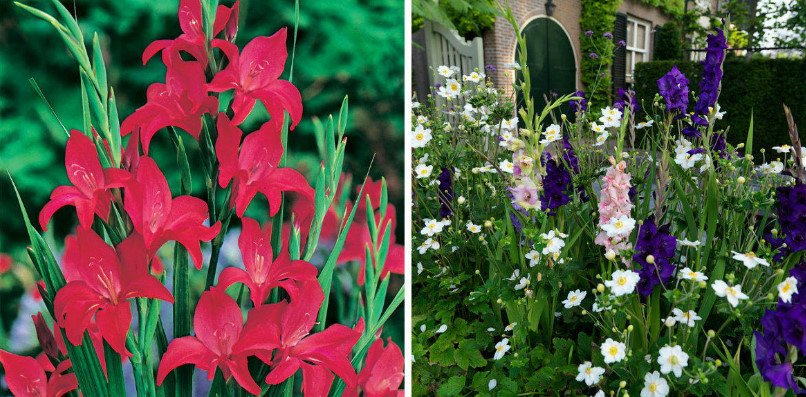
Gladiolus-all well-known corms perennials. Numerous varieties were divided into 3 groups (Encyclopedia of garden plants):
- Grandiflorus Group;
- Nanus Group;
- Primulinus Group.
They are all self-sufficient, therefore, to link them with other flowers difficult, but possible.
Participation in contrasting compositions
Anemone hupehensis var will be a great addition to pastel and dark purple gladioluses. japonica with delicate inflorescences-white, pink flowers-it will significantly soften the composition and make it more interesting.
Important! The best predecessors of gladioli are cultures that do not have common diseases with them. It is undesirable to plant them after carrots and other root crops because of the risk of damage by wireworms.
Gladiolus need moisture-intensive loamy or sandy loam soil neutral reaction, with the addition of a large amount of organic matter.
Corms are planted in the spring, when the soil warms up to + 8…+10 °C. planting Depth of large corms-10-15 cm from the bottom, small-5-7 cm, the distance between plants-15-20 cm
Lythrum salicaria
A spectacular representative of the Lythraceae family comes from Europe and Asia.
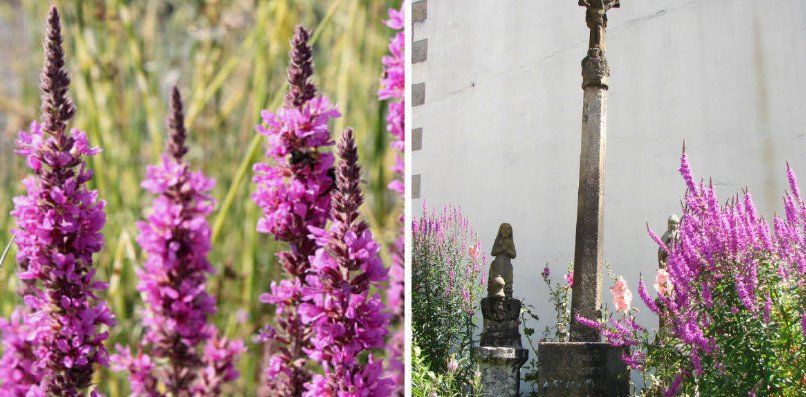
Lythrum salicaria — erect perennial with a height of 1.2 m and a width of 45 cm, with stiff branched stems, bearing lanceolate leaves are pubescent, length 10 cm Flowers are 2 cm in diameter, from purple-pink to purple-red, in spike-like inflorescences with a length of 45 cm; bloom from mid-summer to autumn.
Decorative varieties:
- ‘Feuerkerze’, syn. ‘Firecandle’ – sterile variety, height up to 90 cm, double flowers, red and pink, slender inflorescences;
- ‘Robert’ – height 90 cm, bright pink flowers;
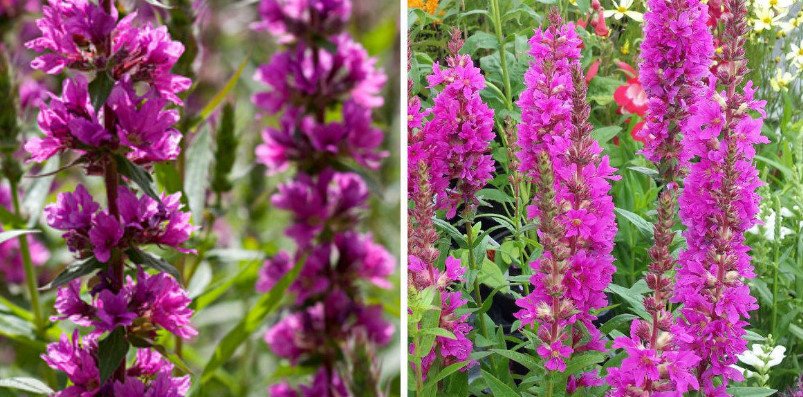
- ‘Happy’ — with a height of 45 cm, the flowers are dark pink.
Participation in contrasting compositions
Good with stock-rose, lavatera. Best combinations with:
- Monarda;
- high Astilbe;
- Eupatorium;
- Lysimachia;
- Ligularia;
- Veronicastrum;
- Persicaria;
- blooming Primula;
- Lobelia siphilitica, L. speciosa.
Important! Recently, actively cultivated in the gardens of natural style, which perfectly mimics the thickets. Weeds on moist soils, grows well in the lowlands, marsh gardens. To avoid unwanted self-seeding, use sterile Terry varieties. Suitable for flower beds, tall borders, scenes, around the reservoirs.
Ajuga reptans
Beautiful ground cover perennial, but the composition with his participation, created on the contrast of inflorescences, are quite rare.
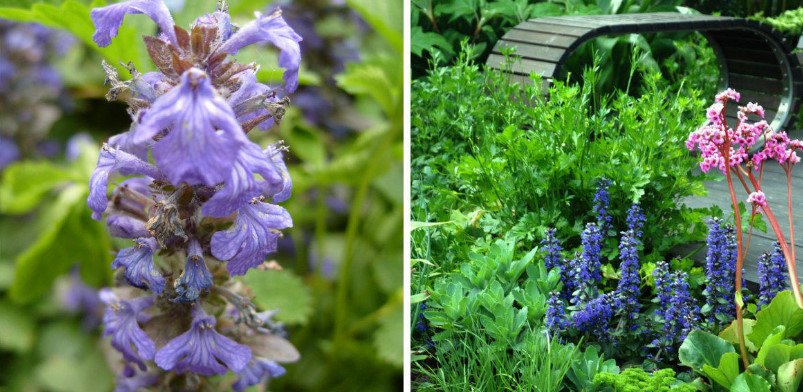
Although its about spike inflorescence ink color is pretty spectacular.
Participation in contrasting compositions
It is harmonious with strawberry, Primula, Tulipa, Bergenia.
Important! It is best to share Ajuga reptans in early spring. Perhaps even continuous division (with the growth of leaf rosettes) with Seating at a distance of 10-15 cm After successful rooting watering is not required even in arid hot summer.
Kniphofia
Recently, there have been very interesting varieties of hybrid origin with different colors of dense spikelet brushes.
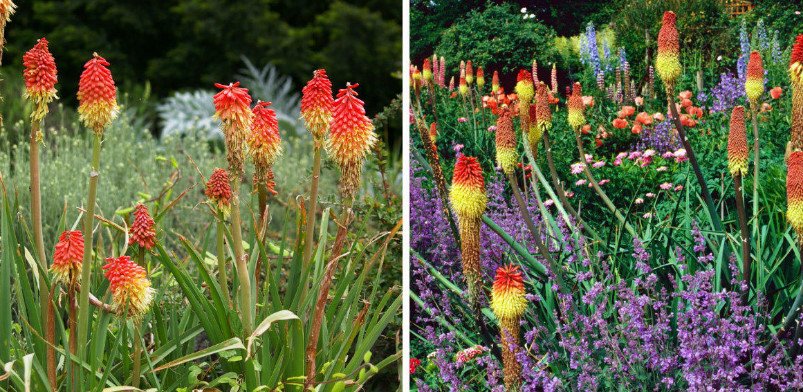
Decorative varieties:
- ‘Hen and Chikens’ – two-tone inflorescence-white-brown;
- ‘Green Jade’ with a height of 1.5 m, a width of 60-75 cm, the inflorescence is yellow-green;
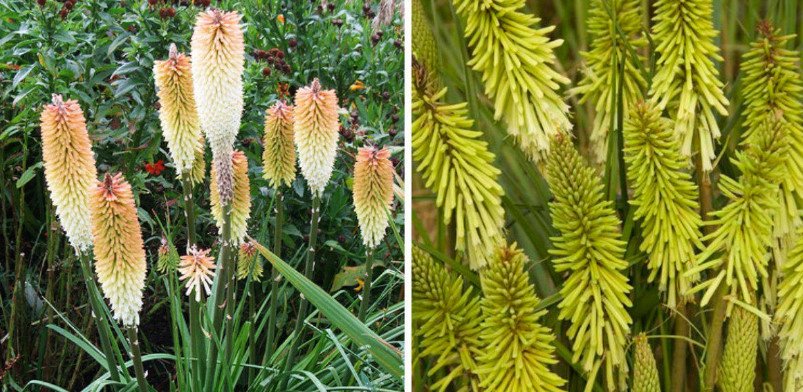
- ‘Shining Sceptre’ – 1.2 m high, 60 cm wide, bright yellow inflorescences;
- ‘Mango Popsicle’ -inflorescences bright orange.
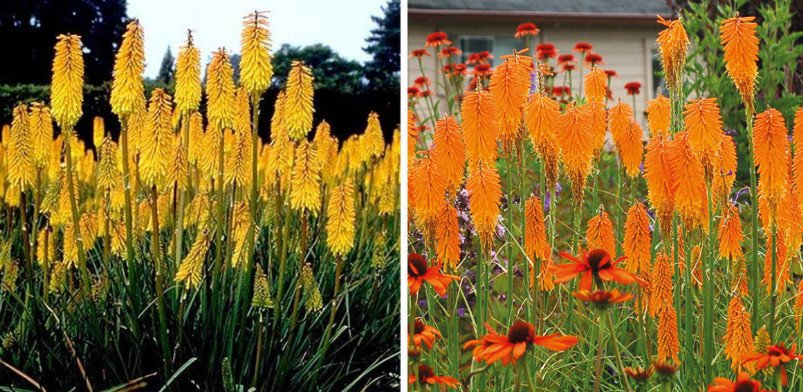
Participation in contrasting compositions
With a rich palette of colors varieties kniphofia can give contrasting combinations between them. In addition, they are spectacular with:
- Leucanthemum;
- Rudbeckia;
- Achillea and others.
Important! To withstand the requirements of all participants of the compositions, providing them with an open Sunny place with fertile soil, in hot and dry summers — regular watering.
Floral kaleidoscope spike plants for contrast compositions continue:
- Verbascum;
- Nepeta;
- Lavandula;
- Liatris;
- Salvia;
- Celosia;
- Elsholtzia and others.
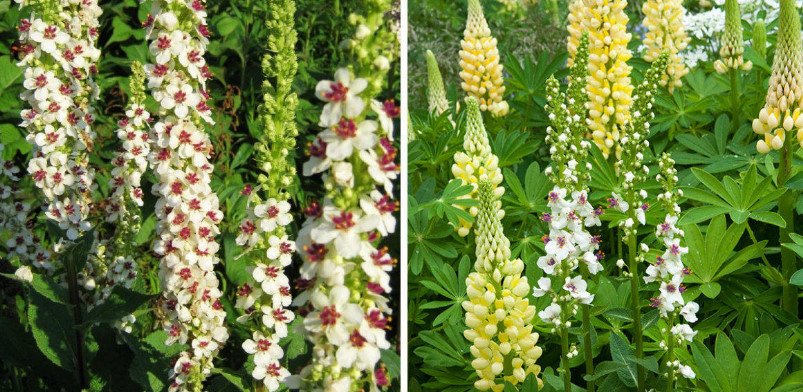
A kind of solemnity, Association with candles (a frequent attribute of the holiday) make them welcome participants in floral arrangements in mixborders.
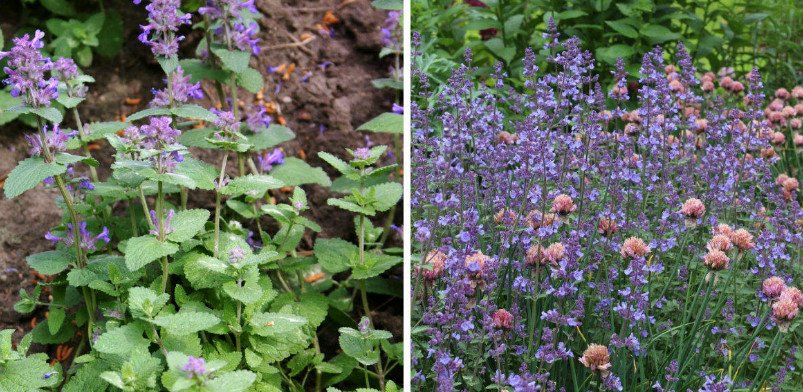
I think that the plants with spike-like inflorescences upward, positive impact on people.
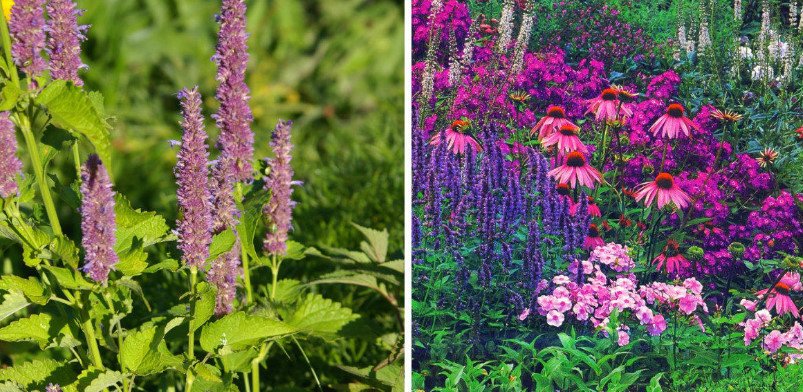
A abundant flowering enhances the positive effect.
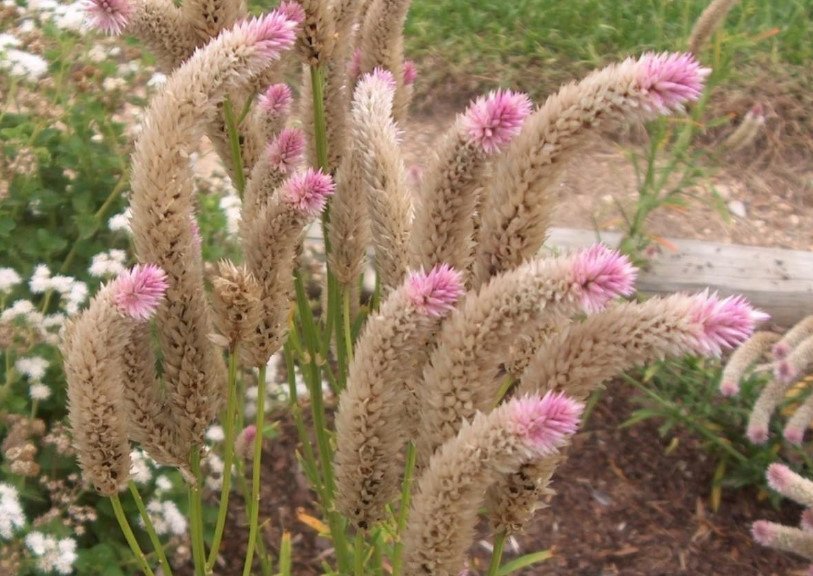
Plants with spike inflorescences (perennial and annual, floral and essential oil) fascinate owners and guests of summer cottages.
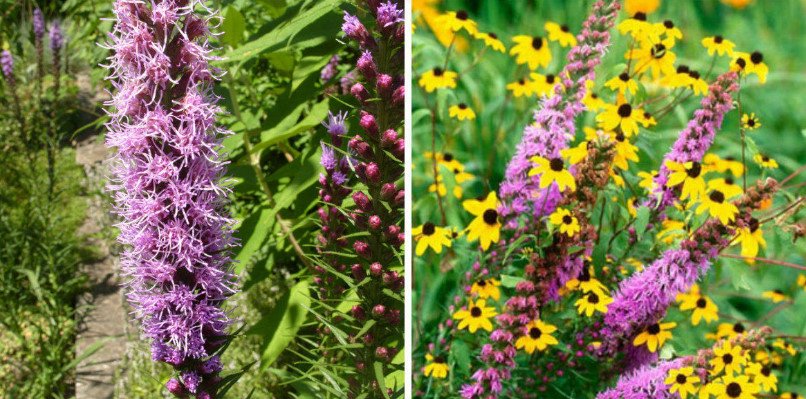
In spring, the impressive Lupinus, Eremurus, Ajuga and others come to the fore.
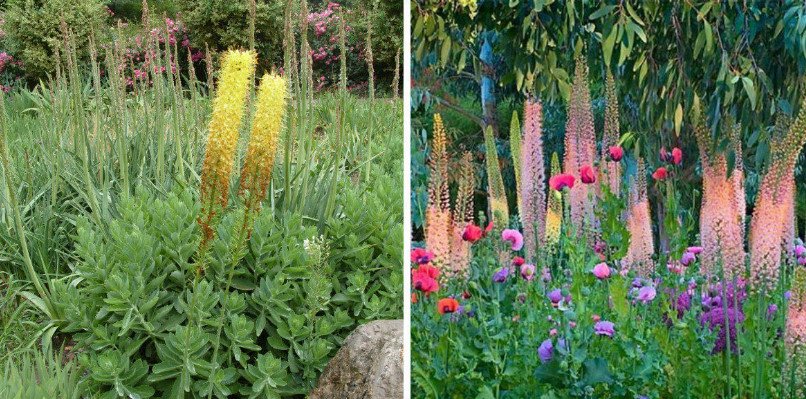
High or low, located in the foreground or background of flower beds, they are always accents.
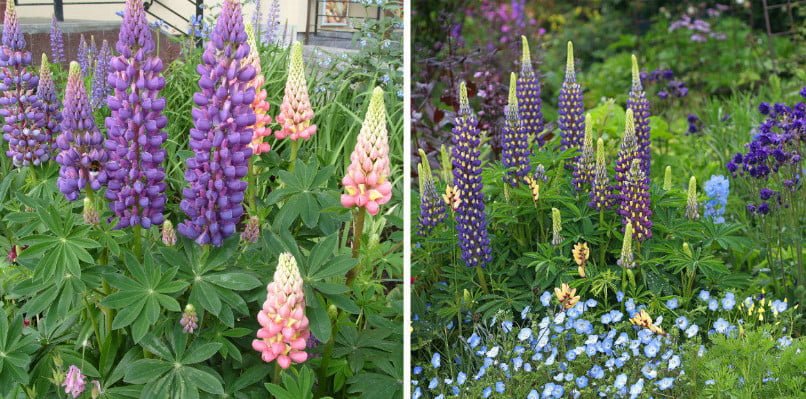
They are not destined to get lost in the composition, they are always doomed to success!
And in conclusion-the traditional question: what plants with spike inflorescences bloom now in your country? With which partners they are presented in the songs?
